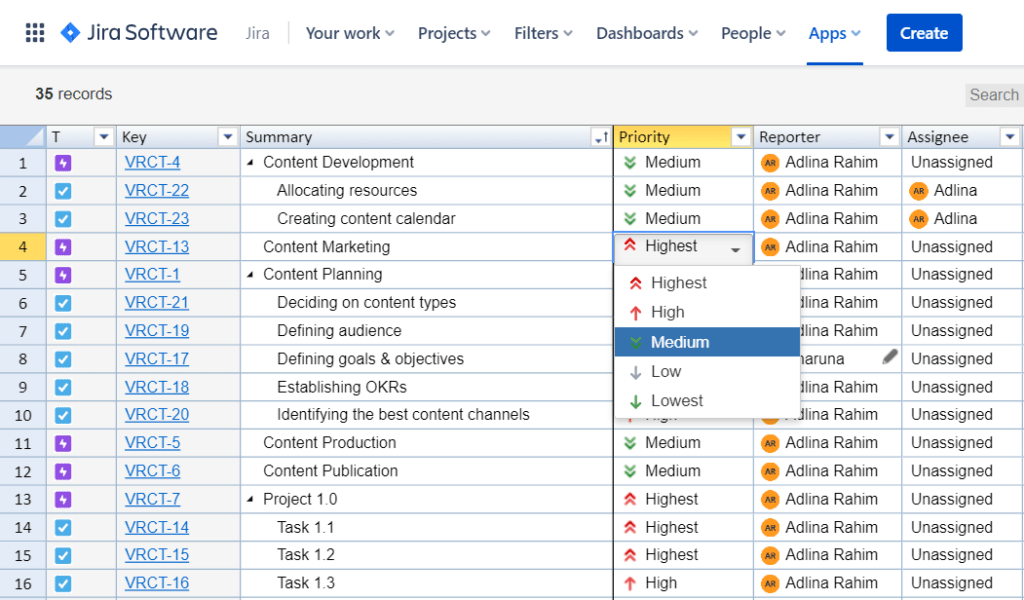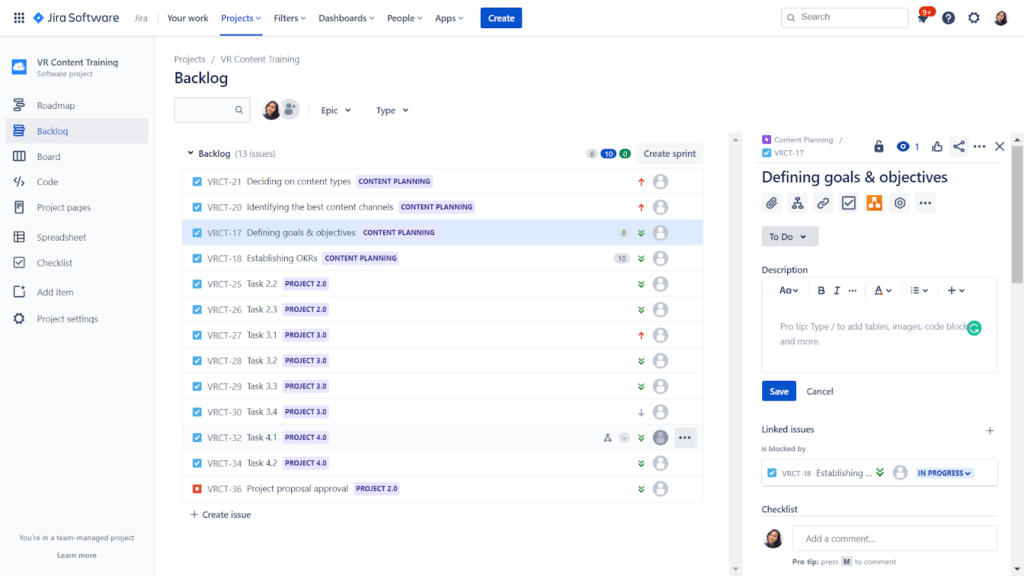What are the keys to successful agile project management? A lot of factors come into play, but the most important ones are:
- Meeting requirements consistently
- Responding to changes with flexibility
- Ensuring value delivery in every iteration
If you don’t meet them, there’s a high chance that your project is going to fail. There are also instances where project managers take these conditions at face value. For instance, meeting requirements as they come without actually assessing how they fare against a project’s roadmap.
Some may mistake being agile for being ad-hoc. You execute, but you don’t strategize. You may achieve some quick wins, but you can’t sustain agility and value delivery.
As a result, your teams operate without a clear goal and are overburdened with tasks that don’t deliver value to stakeholders.
This is not the path you want to be on.
We’ll go deeper into the causes of project failures and how backlog refinement, an overlooked agile practice, can help you plan ahead effectively and keep you on the right project management track.
Reasons Why Your Projects Fail
Ineffective Project Planning
Forty-four percent of the 9th Annual State of Agile Survey respondents cited a lack of experience in agile methods as one of the causes of project management failures. Working on multiple iterations means you need to always plan and be prepared before launching a sprint. But some PMs may not enforce the right practices, like having scheduled planning sessions, simply because they lack awareness.
Poor Task Breakdown
A lot of PMs fail to set up their teams for success by overburdening them with large tasks. Breaking down initiatives into smaller units of work can help avoid this. This is when a backlog is valuable; it can capture initiatives and their breakdown effectively.
Poor Task Prioritization
Even after you’ve broken down your initiative, you still need to prioritize each unit of work. Which one is more important and more aligned with your current business goals? It’s key that you aren’t too ambitious with your deliverables. Ignoring task prioritization will also lead to sudden blockers and scope creep mid-sprint.
Poor Resource Management
The lack of resource capacity planning is another leading cause of project failure. When running a project, it’s easy to stage development tasks and overlook the availability of your resources. Do your team members have the capacity to work on certain tasks? Are you being practical when setting the due dates? Do you have the budget to execute your plans?
Ineffective Communication Among Team Members
Poor communication is also a huge contributor to project failure. For example, unclear instructions from team leaders, a lack of task clarity, as well as lack of transparency in task distribution. It’s important to communicate details of work and note team members’ workload capacity to help them achieve their sprint goals.
Now that you’ve identified the causes of project failure, it’s time to delve into the solution.
How Backlog Refinement Can Help You Avoid Project Failure
A backlog helps you keep a record of all the deliverables that you need to complete. You can set up a backlog in Microsoft Excel, or you can use a top-performing project management platform like Jira where the backlog comes built-in.
What a backlog on Jira looks like.
Now, having a backlog alone is not enough; a list can’t do much, which is why you need to refine your backlog.
Backlog refinement is a structured process where you and your teams review tasks in your product or project backlog and evaluate how each item should be prioritized. This will then help you and the teams know what needs to be delivered in the upcoming iteration. The prioritized items will make up your sprint backlog – guiding you and your teams on the deliverables you need to meet in the upcoming sprint.
What backlog refinement does:
Help You Plan Effectively
Backlog refinement can help you streamline your sprint planning by capturing tasks that are aligned with your business goals and roadmap. So let’s say you have 85 items in your project/product backlog – depending on the size of your team, you probably can’t work on all 85 items in the upcoming sprint. Backlog refinement allows you to filter your deliverables by evaluating items that have higher delivery priority.
Refine Task Breakdown
Refining your backlog helps you identify tasks that are too big for a single team to take on. Let’s say you need to design a new website. The task has to be distributed to different expertise in your team for it to be feasible, and it can’t be completed all at once. This is when you refine your initiative by breaking it down and setting a practical timeline (due date) for each task. Define the dependencies between the tasks to help you distribute work more strategically. An app like Excel-like Bulk Issue Editor for Jira allows you to do all this effectively on one screen.

Improve Task Prioritization
Assigning priorities to tasks is a big part of refinement. It’s important that you arrange your deliverables in the order of delivery priority (critical, high, medium, low) to help you visualize your upcoming sprint’s workload. This will also help your teams operate strategically and with a clear goal in mind. Using the app mentioned above, you can assign priorities to tasks in bulk (more than 10,000 issues). Aside from priorities, you can also easily bulk edit due dates, task summaries, and assignees thanks to the app’s Excel-like interface and functions (copy, paste, revert edits, and freeze columns).

Improve Resource Management
When you have a clear view of your prioritized deliverables, you can also improve resource planning and management. Knowing what you need to accomplish in the upcoming iteration can help you and your team review available resources and identify any possible blockers or where you might come up short. Whether it’s time, money, talent, energy, or even technology.
To discover more refining tips and backlog management best practices, check out our The Ultimate Guide to Jira Backlog Refinement.
Boost communication abilities
Refinement also means you add context to each prioritized item to provide task clarity. This then improves transparency around task parameters and helps set the standard of the deliverables with the rest of your team. It allows them to understand how business goals are aligned with each sprint and empowers them to have a say in how they can meet requirements efficiently. If your team finds the work overwhelming, refine again and remove some items before finalizing your sprint backlog – voila, you’re one step closer to project management success!
Setting Your Project Up for Success
While it’s easy to succeed, it’s also easy to fail. If all it takes to increase your chances of successfully managing your agile project is to refine your backlog, then you need to take action now.
Learn more about backlog refinement by reading “The Ultimate Guide to Jira Backlog Refinement.”



